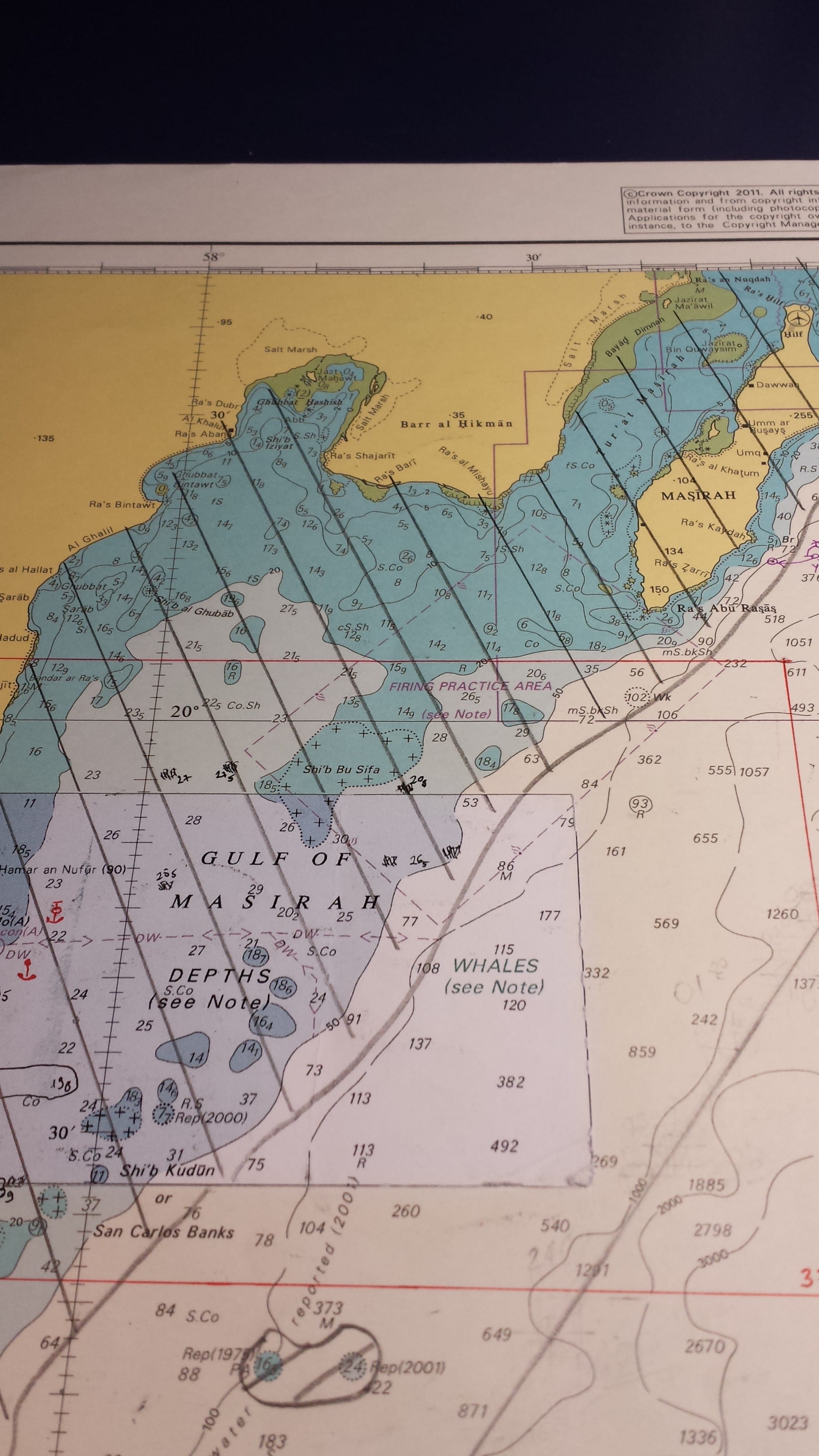Anyone’s Ghost: Fishing grounds of the Arabian Sea
12 February 2015
Morning
We passed Salalah in the night, and the sea is not as lonely as it was yesterday, with the AIS showing at least 5 or 6 ships at a time (when it was sometimes entirely bereft of ships yesterday). Now, as we pass Khuriya Muriya islands, the captain says that when he was a cadet on a general bulk carrier, sometime at the end of the 1970s, early 1980s, whenever they passed these islands they would anchor and would put fishing lines down all the way around the ship and catch fish. Apparently the waters here are rich with all sorts of delicious fish, including some that were 25 kilos. He said that the crew would go from one line to the next and at each line they would pull up a fish, so that in one session, they could catch as much as two tonnes of fish. He said that years later when they tried to do the same, the Omani Navy moved them along. And of course now, it is unimaginable to be able to catch fish off these fast moving containerships.
Meanwhile the Admiralty charts mention that near the Bay of Masirah (which we will reach in the evening today), there is a chance to see humpback whales. The Filipino ship’s officer says that the sea here often has a covering of plankton and so it is rich feeding ground for whales and other kinds of fish.
Walking on the upper deck today, I kept company with a sleek black and white seagull who was skimming the sequined surface of the water in swoops. The Arabian Sea is beautiful here; glimmering coruscating shimmering under the sun, with ribbons of current striping its surface and necklaces of small white birds flying in formations. But it is the solitary black and white gulls that have my attention, so beautiful in flight. There are also dhows in these waters, on our portside, in their beautiful wooden gait slowly making their way to their destination, closer to the coast than even us. Apparently the French Naval ship Charles de Gaulle was in the area yesterday as part of a “deconfliction” (?) mission of the Naval Cooperation And Guidance for Shipping. The letter they sent to the master warned him of the possibly of overflight by naval aircrafts, but none did fly over. So, another ghostly warship wandering the security seas.
One of the other things I want to note today before I forget is the extent to which the work onboard seems to be paperwork. The Filipino ship’s officer seems to be tasked with updating of charts and navigation books and other such things, so most of his time is spent cutting out bits of paper and pasting them on top of maps, chart catalogues, and navigation books. The recording of locations, latitudes and longitudes, temperature and pressure, and a million other details –on paper and online also keeps going on, and most of the equipment is constantly tested, so there are logs kept of the endless tests. Yesterday, the woman cadet spent at least two hours labelling and marking a massive binder that seemed to have every certification and inspection the ship had undergone. From the ITF certificate, to stuff about lifts and oil and fuel tanks and a million other things. So, this kind of paper task seems to take up as much time as the actual job of navigation. On the decks, painting and repair and maintenance seems to be the most frequent activity. So, pens and paintbrushes as the commonplace tools of navigation.

